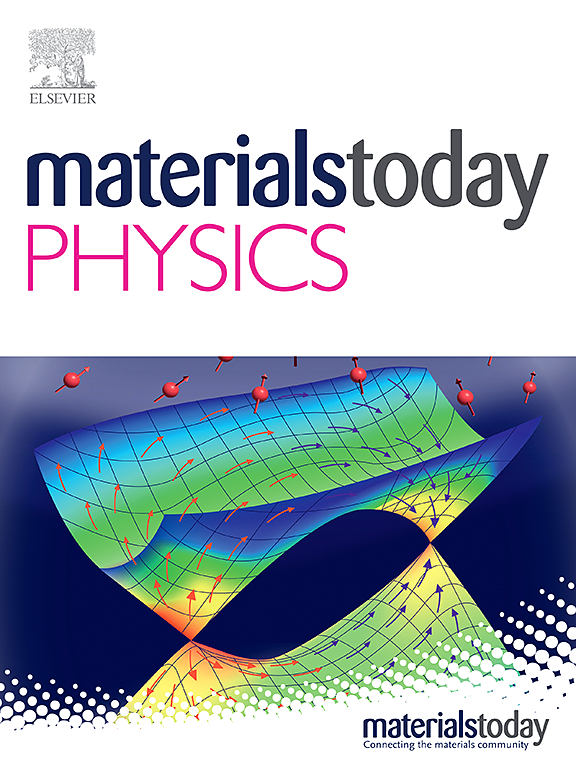Enhancing atmospheric water harvesting on hydrophilic-superhydrophobic hybrid surfaces through wettability gradient and synergistic diversion channel
IF 10
2区 材料科学
Q1 MATERIALS SCIENCE, MULTIDISCIPLINARY
引用次数: 0
Abstract
Climate change and resource depletion have exacerbated freshwater shortages, underscoring the urgent need for sustainable water resources. Atmospheric water harvesting technology, inspired by natural structures-especially fog collection on hydrophilic-superhydrophobic hybrid surfaces-offers a feasible solution due to its simple fabrication process, high collection efficiency, and zero energy consumption. While hydrophilic-superhydrophobic hybrid surfaces show potential for improving water collection efficiency, research on the mechanisms of droplet nucleation, growth, detachment, and transport remains limited. In this study, a hydrophilic porous hybrid surface with tunable wettability was fabricated by adjusting laser processing parameters, achieving a maximum collection efficiency of 1874.7 mg/cm2/h at a contact angle of 6°. The surface energy difference caused by the wettability gradient on this superhydrophilic-superhydrophobic hybrid surface accelerated droplet detachment and transport. Additionally, the introduction of single-row and multi-row diversion channels disrupted the droplet's force equilibrium and enhanced its directional sliding, further increasing the collection efficiency to 3623.1 mg/cm2/h and 4016.9 mg/cm2/h, respectively. Simulation results indicate that the combined effects of wettability-driven forces and Laplace pressure significantly improve the efficiency of droplet nucleation, growth, detachment, and sliding. The tunable wettability hybrid surface developed in this study is highly versatile and can be applied to a wide range of substrates, showcasing substantial potential for atmospheric water harvesting offering a sustainable water resource solution for arid regions.


通过润湿性梯度和协同导流通道增强亲水-超疏水杂化表面的大气集水能力
气候变化和资源枯竭加剧了淡水短缺,突出了对可持续水资源的迫切需要。大气集水技术受到自然结构的启发,特别是在亲水-超疏水混合表面上收集雾,由于其制造工艺简单,收集效率高,零能耗,提供了一种可行的解决方案。虽然亲水-超疏水混合表面显示出提高水收集效率的潜力,但对液滴成核、生长、脱离和运输机制的研究仍然有限。在本研究中,通过调整激光加工参数,制备了具有可调润湿性的亲水多孔杂化表面,在接触角为6°时,最大收集效率为1874.7 mg/cm2/h。在这种超亲疏水杂化表面上,由润湿性梯度引起的表面能差加速了液滴的分离和输运。此外,单排和多排导流通道的引入打破了液滴的力平衡,增强了液滴的定向滑动,进一步提高了收集效率,分别达到3623.1 mg/cm2/h和4016.9 mg/cm2/h。模拟结果表明,润湿性驱动力和拉普拉斯压力的联合作用显著提高了液滴的成核、生长、脱离和滑动效率。本研究开发的可调润湿性混合表面具有高度通用性,可应用于各种基质,显示了大气水收集的巨大潜力,为干旱地区提供了可持续的水资源解决方案。
本文章由计算机程序翻译,如有差异,请以英文原文为准。
求助全文
约1分钟内获得全文
求助全文
来源期刊

Materials Today Physics
Materials Science-General Materials Science
CiteScore
14.00
自引率
7.80%
发文量
284
审稿时长
15 days
期刊介绍:
Materials Today Physics is a multi-disciplinary journal focused on the physics of materials, encompassing both the physical properties and materials synthesis. Operating at the interface of physics and materials science, this journal covers one of the largest and most dynamic fields within physical science. The forefront research in materials physics is driving advancements in new materials, uncovering new physics, and fostering novel applications at an unprecedented pace.
 求助内容:
求助内容: 应助结果提醒方式:
应助结果提醒方式:


